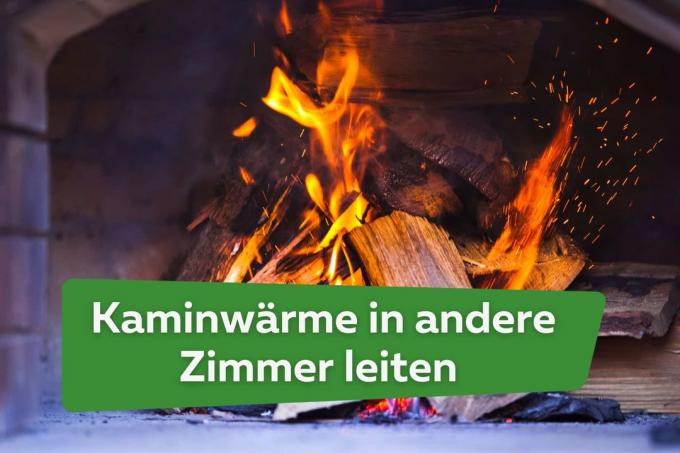
When using a stove, there is not only the possibility of heating a room, you can also direct the heat to other rooms with the right technology. You can read here how this works and what you need to bear in mind.
In a nutshell
- the chimney position is essential
- choose the right system
- Insulation against heat loss necessary
Table of contents
- Problem fireplace
- Use chimney turbines
- Retrofit home fans
- Use normal fans
- Alternative: water-bearing stoves
- Fireplace construction: regulations
- frequently asked Questions
Problem fireplace
wood-burning stoves that burning of wood Generate heat are not ideal for heating more than one room due to their function. The resulting heat is released locally and distributed in the respective room. As heat rises, the room gradually heats up, but does not move to other rooms. This is exactly the biggest problem with stoves. Fortunately, it can be fixed. There are different ways in which you can direct the heat from your stove and thus heat other rooms. These depend on the following factors:
- location of the chimney
- New construction or modernization
- property or rented premises
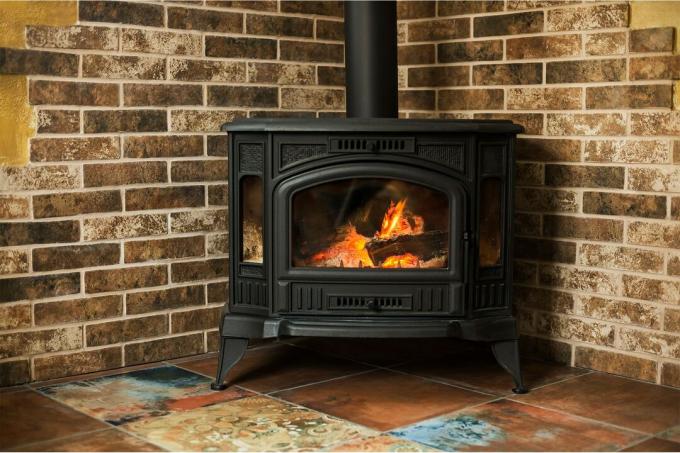
Use chimney turbines
Chimney turbines are also known as chimney fans or chimney fans. This is primarily a method that is suitable for a new build or as a modernization measure for a single-family home. Since piping and miscellaneous equipment is required for implementation, chimney turbines are not an option for rental apartments or houses if the landlord objects.
The structure as follows:
- The stove is equipped with a turbine or a fan
- Pipes conduct heat to other rooms
- Air vents enable hot air to be released from the ducts
- Thermostats regulate the operation
- Filters protect against dirt
By using a chimney turbine, you can effectively use the heat generated by your stove, conduct it and save energy because not a part is wasted. However, installation is usually not possible without the help of a specialist, since aspects such as fan performance, pipe types and precise installation are essential. If you want comprehensive stove heating, this variant is ideal.
A notice: If you are buying or renting a house with a classic fireplace, inquire about possible heating systems. Existing chimneys were often equipped with a chimney turbine during modernization.
Retrofit home fans
Significantly less effort is required if you retrofit your living spaces with house fans. Also known as bathroom fans, they are used to direct moisture from the bathroom to other rooms. This system can be easily turned around. If the stove is in a good position, you can install the house fan above it and thus conduct the rising heat to the other room. The only disadvantage: This method can only be used for a single room, which must be adjacent to the wall to the fireplace. If two rooms are next to each other behind the stove, house fans can be installed for both.
The following measures are necessary for this:
- hole in adjacent wall
- install as high as possible
- optional: install switching thermostat

Since you need a hole for the house fan, you should check carefully beforehand whether there are any cables running at the respective point. Otherwise, you just have to choose a suitable model that sucks in the warm air and directs it into the other room. In combination with a switching thermostat, you also save energy, since the house fan only switches on when the fireplace room has reached a certain temperature.
A notice: If you live in a rental house without the possibility of retrofitting, you can alternatively rely on mobile stove fans. These are installed on top of the stove and distribute the warm air in a desired direction.
Use normal fans
Another option is to use standard standing and table fans to transfer the heat to other rooms. Although these are significantly less efficient than the methods already mentioned, a small part of the heat generated by the stove can be moved. The position of the stove and the size of the living space are particularly important for this method:
- open construction preferred
- small room size recommended
- convenient location of the stove in proximity to other rooms
A notice:More than one fan is not suitable for this method. The energy consumption would be too high in the long run and the result would not be sufficient.
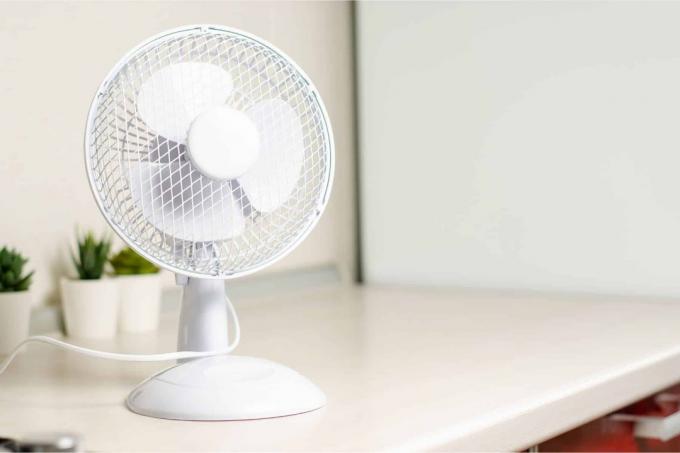
It is applied as follows:
- Place the fan 2 to 3 m in front of the stove
- slightly oblique in the direction of a room passage
- align towards the ceiling
- only switch on when the oven is overheating
- select a higher speed level
- Max. Let it run for 10 to 15 minutes
- Method several times throughout the day possible
Alternative: water-bearing stoves
If the variants already mentioned do not appeal to you, you can opt for a water-bearing stove instead. With these systems, the stove has a heat exchanger (water pocket). This contains water that is heated by the stove and then sent to a buffer storage tank. The heat can be stored there or used further, primarily for the following purposes:
- Heating
- service water
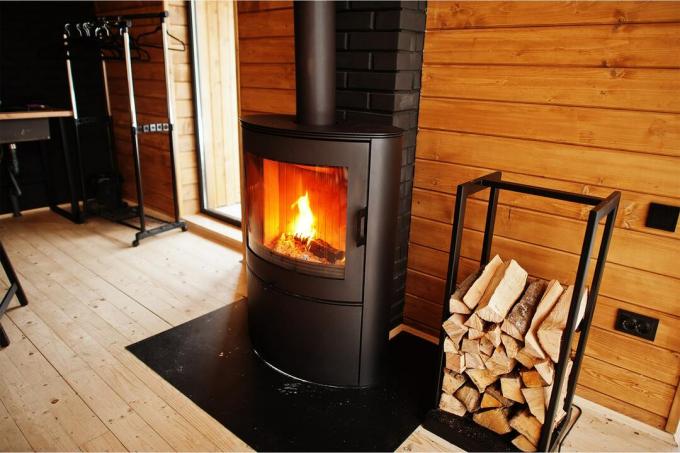
In this way, the heat from the stove can be effectively conducted into other rooms. Since you can even support the entire heating circuit in this way, this method is particularly suitable for new buildings. Professional planning is particularly important with these systems, as reliable implementation is not possible without specialist knowledge. Nevertheless, the system has some advantages:
- hardly any energy loss (highly efficient)
- lower heating costs
- low emission
- can be combined with solar thermal systems
As you can see, you can benefit from the use of water-bearing stoves in the long term. In addition to the advantages, there are certain points that you should still keep in mind:
- not usable as pure central heating (only support)
- enough space to implement
- costly installation
Fireplace construction: regulations
To ensure that you can safely use your future wood-burning stove, including the heat transfer system, there are a number of regulations to be observed. These are specified by the Federal Immission Control Ordinance (BImSchV). These are primarily the following five areas:
- underground
- air supply
- Installation of the stovepipes
- safety distances
- chimney
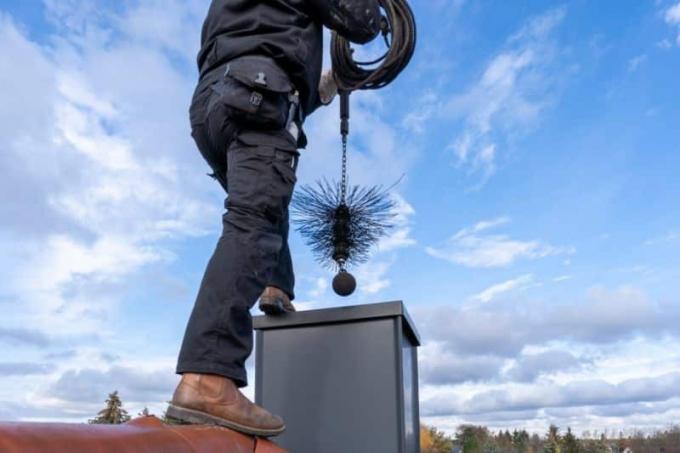
It should also be noted that you need a permit for the stove and that it must be approved before use. Otherwise it is not legal to use it.
frequently asked Questions
Only slightly. Since the fans are often hanging a few centimeters below the ceiling, some of the warm air always accumulates above it. Furthermore, the air is only slightly moved into other rooms if no other fans are used.
Airflow fans are a form of stove fan that is placed on top of the stove. They do not require any electricity at all because they are powered by the heat of the oven. With these models, you can save energy and partially direct the heat to other rooms.
Yes, often more than you think. Doors without a gap keep most of the warm air in the room. Theoretically, you could fit shorter doors to improve heat distribution in combination with fans. But this is only possible in small apartments or houses.
The acceptance of stoves and associated heat transfer systems is only possible through the authorized district chimney sweep of your community or city. You must contact them so that they can verify the installation. Only the confirmation by the district chimney sweep gives you the opportunity to legally use your stove.



